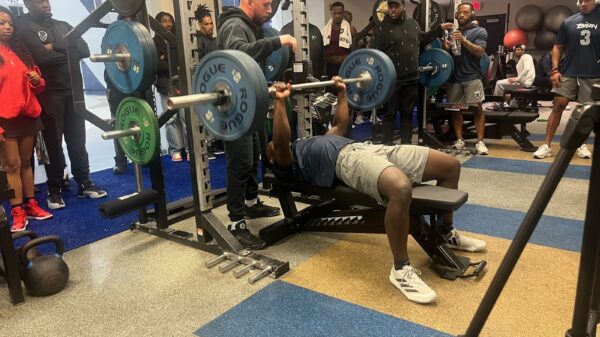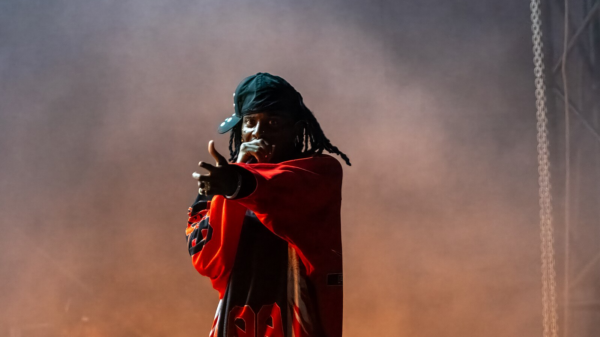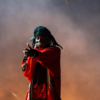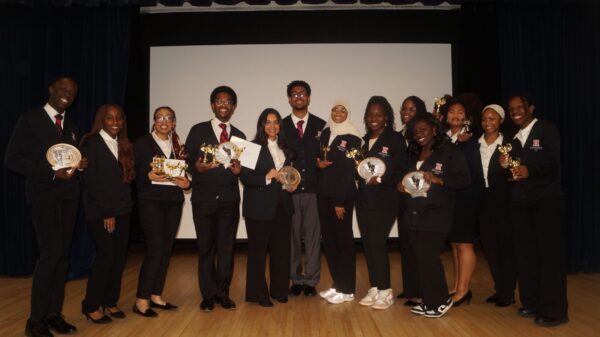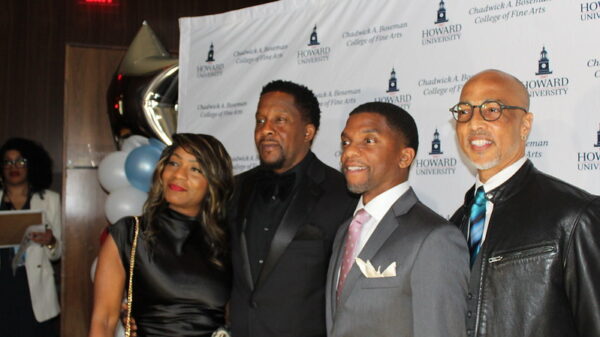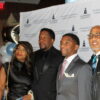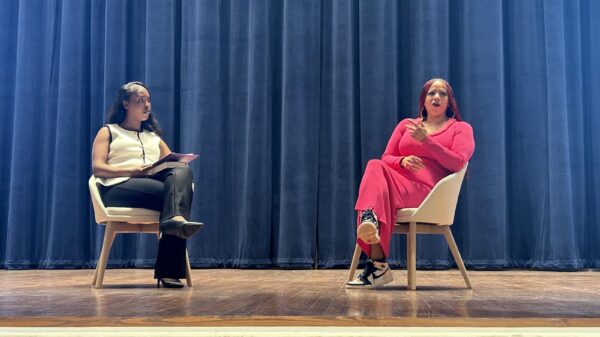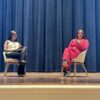When the phrase, “Black in fashion” is said, what comes to mind are designers like Laquan Smith and fashion houses like Luar, but to be Black in the fashion industry isn’t exclusive to designers. Kynadi Hyde, fashion journalist, digital creator and senior broadcast journalism major, is seeking to transform the fashion industry through the power of storytelling.
As a true child of the 2000s, Hyde grew up watching Disney Channel and shows like “Hannah Montana” and “The Suite Life of Zack and Cody.” Taking her style from flamboyant characters like Sharpay from “High School Musical” and “That’s So Raven’s” Raven Symone, along with inspiration from her mom and grandmother, Hyde’s passion for fashion was born.
“I always have to give credit to my mom. She’s the one that really introduced me to the art of style and fashion.” Hyde shared. “Between her and my grandmother, being the style icons that they are, [it] just translated to me and how I love and appreciate what fashion means to me – which is love, expression, creativity and genuine personal identity.”
Trading in fashionable flamboyance for a more mature and “muted” type of style, Hyde began to further embrace fashion, and specifically the medium of journalism after childhood acknowledgments for her writing. Now a published journalist and writer for college women’s fashion publication, College Fashionista, Hyde sets her sights on bringing diversity to the fashion industry.
“There’s enough people who talk about how to look like Kate Moss, enough people who talk about Kendall Jenner, Kaia Gerber… but there’s not enough people who are bridging the gap between the super-talented, creatives that we have at places like Howard,” she said. “People who are making strides in the industry based in New York and in L.A. who are young and who are Black.”
With America’s long history of erasing the work of marginalized groups to present-day movements like bans on critical race theory, Hyde’s journalism offers a record of Black accomplishments within fashion. Her desire to bridge the gap between the Black community and the fashion industry comes from wanting the community to be rightfully celebrated and remembered. “Our history has been very much so erased – from all the way back and before slavery. There’s not much that we know about our culture [and] in our own families it’s hard to trace back, for African-Americans in particular, that part of our lineage” stated Hyde. “So it’s important for me to be that person that gives people something tangible like a story, a feature story, or an interview that they hold on to forever, and really mark their impact on the world.”
But Hyde’s storytelling doesn’t stop at what she can do at a publication but extends to the digital space as a creator and influencer. With over two thousand followers, previous ambassador work with brands like Marc Jacobs and Viktor&Rolf and a blog, Hyde seeks to use her digital platform to document her life and leave a path for others.
“Social media is the perfect place for us to be able to mark our experience on this earth while we are still here,” Hyde said. “So I’m hoping that… people who are like me – who know that they want to be in fashion but know that they don’t want to make clothes or know that they don’t want to work in a store necessarily – have something to look at and look back to.”
Black creatives are everywhere. For Hyde, she sees the power of Black creatives to be impactful storytellers and names her Black art “transformative.”
“There’s nobody that can really tackle what it’s like to be Black other than a Black person and the creative space deserves to have those voices,” Hyde shared. “I want to transform what it looks like to be a storyteller in the fashion industry…and link people who are underrepresented to the larger industry that still needs a little revamp in terms of accurate display of Black culture, woman culture and queer culture, and everything in the middle.”
Copy edited by Nhandi Long-Shipman






